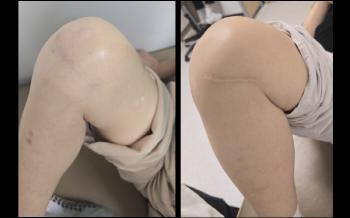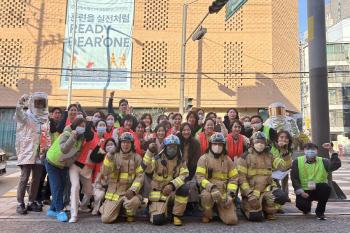CaHA filler investigates the effect of improving neck wrinkles and facial aging
|
Professor Park Gui-young of the Department of Dermatology at Chung-Ang University Hospital recently published the results of two clinical studies in international journals that investigated the skin improvement effect of calcium hydroxyapatite (CaHA) filler.
First, the research team evaluated the skin barrier, moisturizing, elasticity, and wrinkle improvement effects of the neck by observing the four-week progress after performing a CaHA filler (Product Name: Voassom) procedure diluted once in the neck wrinkles in 10 adults aged 19 to 70 in a study related to 「Effective of Diluted Calcium Hydroxyapatite Filler for Neck Rejuvenation: A Pilot Study on Single-Session, Short-Term Outcomes」.
As a result, percutaneous moisture loss (TEWL) was significantly reduced by about 24.3% from 8.07g/m2/h before the procedure to 6.11g/m2/h after 4 weeks of the procedure (p=0.001), confirming improved skin barrier function.
In addition, skin moisture increased (p<0.01) from an average of 57.72 AU to 64.78 AU, and elasticity indicators (R2, R5, R7) all showed statistically significant improvements.
In particular, the total elasticity index, R2, improved from 66.5 AU to 76.7 AU, and the net elasticity index, R5, also improved from 64.3 AU to 76.0 AU (p<0.01).
In addition, the Horizontal Neck Wrinkle Severity (HNWS) score, which indicates the severity of neck wrinkles, was significantly reduced from 2.44 to 1.00 on average (p<0.001), and no serious adverse reactions related to the procedure were reported, and minor bruises occurred in some patients but disappeared naturally.
As a result, the research team proved the safety of CaHA fillers and the possibility of improving simple neck wrinkles through this study.
Professor Park Gui-young said, `Although the neck area is easily aging, effective non-surgical improvement methods were limited"This study is of great clinical significance in that it has confirmed meaningful effects on improving skin barrier, elasticity, and wrinkles with just one dilution CaHA filler procedure"
On the other hand, the dermatology team at Chung-Ang University Hospital also confirmed the multiple effects of CaHA fillers on restoring the volume of the cheek area and improving skin barrier, moisturizing, and elasticity through another study (Dual Benefits of Calcium Hydroxyapatite Filler: A Prospective Study on Middle Face Volume Restoration and Skin Quality Improvement).
The research team observed the progress for 24 weeks (6 months) after injecting CaHA filler once in 15 adult men and women between the ages of 19 and 70 whose mid-face volume was turned off.
As a result, the MFVDS score evaluating the mid-facial volume status decreased significantly at all time points of 2, 4, and 24 weeks after the procedure, confirming that the volume restoration effect remained stable for 6 months after the procedure.
In addition, in the Global Aesthetic Improvement Scale (GAIS), which evaluates the degree of improvement in appearance before and after the procedure, all patients were evaluated with an average of 5 points ('very improved') at 2 and 4 weeks of the procedure, and the high improvement effect continued with an average of 4.53±0.52 points at 24 weeks.
In addition, the indicators that objectively measured the skin condition also showed positive changes, with the significant decrease (p<0.01) in the skin barrier function in both 4 weeks and 24 weeks of the procedure, the skin moisture level significantly increased (p<0.05 or p<0.001) at the previous point in time, and the R2, R5, and R7 (biological elasticity, biological elasticity) levels indicating skin elasticity also significantly improved (p<0.01) at both 4 weeks and 24 weeks.
Patient satisfaction also remained high throughout the entire period, with most of the study subjects positively evaluating both the volume and skin quality improvement effect of CaHA filler.
Professor Hong Jie-yeon, the first author of the study, said "This study demonstrates that CaHA fillers can act as a 'skin booster' that induces overall quality improvement of skin beyond simple volume supplementation."We believe it can be used as an integrated facial aging improvement strategy to simultaneously improve volume and skin quality in the future."
Professor Park Gui-young then said, `The results of these two studies are expected to be used as basic data to expand the scope of clinical use of CaHA fillers and to suggest safer and more effective ways to improve skin aging.'
Meanwhile, the research team's research was published in the latest issue of the SCIE-class journals, the International Journal of Cosmetic Dermatology.
|
This article was translated by Naver AI translator.





